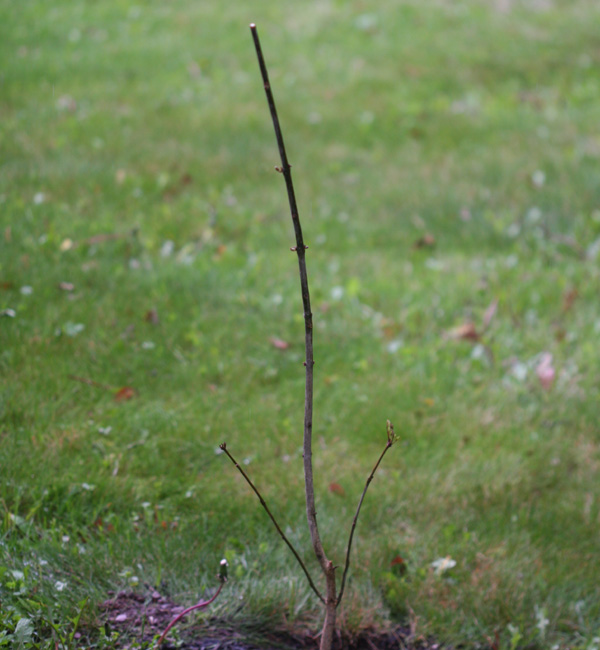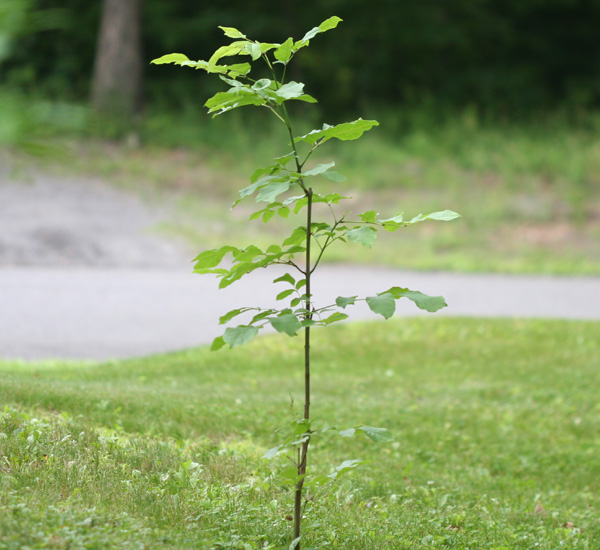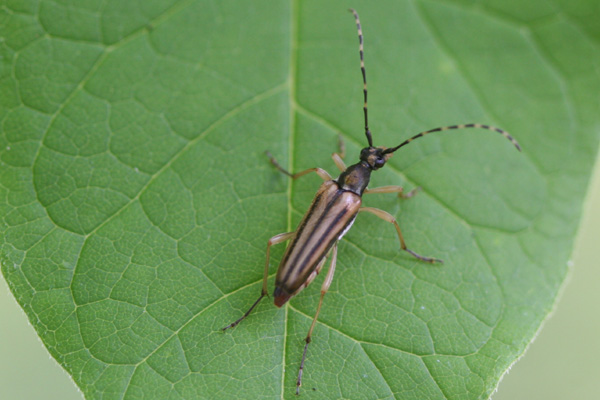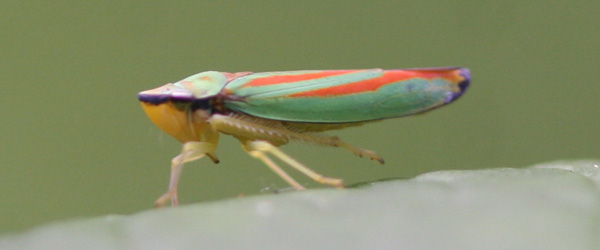Way back when I started my Anti-Global Warming Big Year I decided that if I flew somewhere and stayed there for more than a couple of days I could count the birds I saw there provided I offsetted the carbon that the flight produced. So I counted a bunch of birds in California that I saw in January and figured out how many trees I needed to plant to make up for the flights to and from the west coast. So back in May I ordered a bunch of Eastern Red Cedar and Mountain Ash and my Dad planted them in his yard. The cedar have all died but the ash trees, well, they are thriving!
I certainly never would have thought that what looked like four dead sticks would manage to survive at all. This is what all four Mountain Ash looked like when they were planted:
Not much to look at, right? But after a couple months of water and sunshine in the fertile ground of West Saugerties, well, the trees look good!
But why Mountain Ash? Well, they won’t get too big, which is important as my parents would like to be able to see past their front yard, and they will provide berries that birds (and other creatures) can’t resist. My father wanted to make sure that the next time Pine Grosbeaks show up in the neighborhood that they will stop by his place and not just entertain the neighbors.
Of course the trees are still too young to produce berries, or even to hold the weight of a bird if berries were available, but insects galore have been spotted on the young trees. The first shot is of a ladybug, or, more properly, a lady beetle, in this case what I believe is an Asian Multicolored Lady Beetle (Harmonia axyridis), which, after their repeated introduction, are gradually displacing native North American lady beetles.
The next is, I believe, one of the many species of Long-horned Beetles that exist in North America. If anyone out there is more of an expert, please share your knowledge in the comments (it is one of the “flower longhorns,” or, more specifically, Analeptura lineola. Thanks to Julie for the ID tip).
And, finally, a Candy-striped Leafhopper, or, at least one of the seventeen leafhoppers from the genus Graphocephala.
It is nice to know that while the young trees are busy sucking down the carbon dioxide spewed forth by my flights to and from California that they are already providing habitat to bunches of bugs. I just can’t wait for the birds to get the berries!


















Nice job!!! I am going to try and do something like this too I think.
We planted two of your Mountain Ash in our yard, also. They grew lovely thick leaves and then the deer ate them down to nubs. They are trying valiantly to put forth new greenery so as to feed the fawns. Everyone and everything that comes to us gets a meal.
@Dan: Go for it! It’s fun to see how quickly the trees grow.
@Aunt Bonnie: I can’t believe I forgot to mention your trees…but your comment will serve as a reminder for my dad to put some kind of barrier up to keep the deer off!
This is one of the flower longhorns, Analeptura lineola.
@Julie: Thanks for the info! I google image searched your ID, and, sure enough, that is what it is…
Very cool that you thought of planting to trees as an offering to cleaner air!!
hi, andar here, i just read your post. i like very much. agree to you, sir.